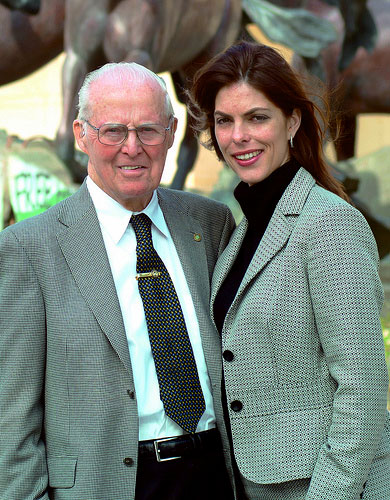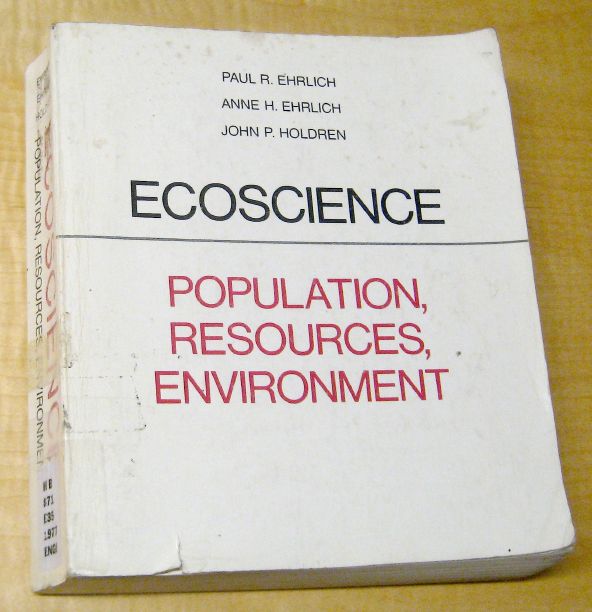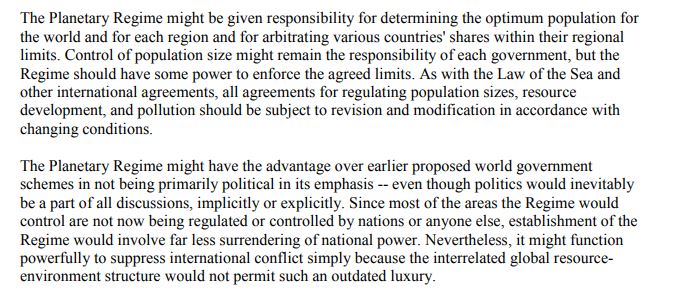When Holdren and Ehrlich (and the other Ehrlich) were trying to drum up support for mandatory birth control and a world government to enforce it(1), Borlaug and the science community quietly made farming more efficient than ever. Today, even the poorest people in most of the world can afford to be fat, something never possible before, and that is thanks to the legacy of Dr. Borlaug.
But what's next? Can we do for everything what they did for cereals?
It certainly seems possible. With older techniques like organic-certified mutagenesis we may have hit caps on growing food under inhospitable conditions, but genetic engineering, RNAi, and now CRISPS-Cas9 there is reason for optimism that everyone will be able to have a variety of locally grown, affordable, diverse foods.
But first, baby steps.

Drs. Norman and Julie Borlaug (his granddaughter). Credit: AgriLife via Flickr. Go here to read Organic Industry A-Team stooge Tom Philpott attack her for supporting science. The reputation of Grist has gotten much better since he took his conspiracy theories to Mother Jones.
A recent paper in PNAS found that the next phase in the Green Revolution may be ready to begin. Whereas the first phase was to get people enough of anything, thanks to science and technology a country like India can now diversify beyond the “rice dominated monsoon cereal production ” that Borlaug had to optimize.
Their models basically turned knobs of pollution, resources, and output and found that replacing some rice crops with millets and sorghum would be better for the country without undermining calorie production or using more land. Part of their secret sauce for convergence was reducing impacts of climate change, which are basically impossible to model but seem to be mandatory to get published in PNAS.(2)
But it's reason for optimism, especially when environmental groups and their political allies at media corporations act more like a doomsday cult. Yet Dr. Borlaug faced the same cultural milieu and now has taken his place as one of the most important scientists of the 20th century.
There are challenges, sure. Opposed to science are $2 billion in activist groups engaged in a war of extinction on food and chemicals, but just like there are still vaccine deniers, a new generation will see through their scaremongering, even in Europe, and not want developing countries to be left behind.
NOTES:
(1)



It's as fun a read as you think. When Dr. Holdren was appointed Science Czar by President Obama, the agriculture community knew it would be a long 8 years. And it was, he stayed the whole time, they had to pry his fingers off the desk in January of 2017. Unfortunately, the Trump administration didn't do the same at the National Institute of Environmental Health Sciences so they have remained unchecked in their abuse of statistics to support political allies in the organic food and alternatives to medicine communities.
(2) PNAS weirdly just published a paper with claims about hurricanes that used no hurricane climate data and instead had insurance claims as a proxy for hurricane differences from the past. These kinds of speculative models also aren't great because academics often make models to predict the past, a no-no in private sector science. They also published a paper claiming female named hurricanes cause more damage because men are sexist. A huge swath of people inside PNAS must really hate science.




Comments